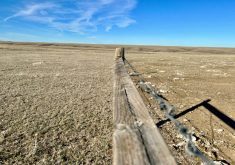Growing up on the farm in the 1960s, two events caused a dramatic shift in the family’s eating habits.
First, the cow died. She was replaced with skim milk powder, which scientifically speaking, offered similar nutrition, was less expensive, stored better and was much more convenient than maintaining a cow and milking two times a day.
But it tasted terrible. The family lore is my older brothers paid for their first bicycles by drinking milk after my parents offered to pay them a penny a glass.
Read Also

Your best (and easiest) holiday dainty tray
Make-ahead recipes, store-bought goodies and co-operation with friends and family: Here’s how to throw together a stunning, low-stress tray.
The second major shift also involved dairy. Butter at the dinner table was replaced by a similarly sized brick resembling lard. Except it was made from plant-based sources and came with a bright orange packet of dye to make it look more like the butter. This occurred after my father was diagnosed with high cholesterol and told to avoid eating saturated fats. At that time, eggs were also deemed dangerous.
The science of the day pronounced margarine as a much healthier choice and that was widely disseminated to the public through media, dietitians and the medical profession. Thirty years later they started reporting the new science that showed that hydrogenating vegetable oil to make it solid created trans fats, which are now considered worse than the saturated fats in butter.
We are now told the links between cholesterol in our foods, cholesterol in our bodies and our long-term health are much more nebulous.
All of this came to mind last week while sitting in on an Agricultural Institute of Canada (AIC) conference and workshop on how to get research results into the hands of end-users.
A background document identified key challenges facing researchers communicating about science. One is that the process from research to end use is no longer “linear,” or a “pipeline” as it was back in the days when most research was conducted by public institutions. Researchers made a finding, they told everyone about it, industry adopted it and the public good was realized.
Sandra Schillo, assistant professor of the Telfer School of Management at the University of Ottawa, told the conference that taking research findings through to implementation these days is much more complex and not always driven by end-user needs. There are more stakeholders involved, ranging from regulatory agencies, public/private partnerships, and a public that appears to be increasingly skeptical that the purveyors of science have its best interests at heart.
The public is distanced from the farm and has no direct economic stake in the value chain, yet — to the industry’s chagrin — it can influence when and how new technologies or practices are introduced through something that’s come to be known as “social licence.”
“Ninety per cent of respondents agreed there is a need to bridge the gap between researchers and consumers in order to retain agriculture’s social licence to operate and produce,” the AIC backgrounder said.
The document acknowledged that the consumer’s role in the research value chain has been poorly recognized in the past. But respondents also noted “that many consumers are not open to learning facts based on science.”
What constitutes a fact when it comes to food science? Was the now disproven science on margarine 30 years ago “good science” or “junk science?”
Delegates at the conference had a lot to say about so-called “mommy bloggers” and unscientific attacks on modern production practices. They point to publications such as The Real Dirt on Farming as a credible source of information. However, it also makes some challengeable claims, such as saying Canadians enjoy one of the lowest-cost food baskets in the world.
That assertion is based on the percentage of annual income spent. By global standards, Canadians are relatively wealthy and their food is relatively expensive.
When people are told to “trust the science” or “the science says… ” it comes across as doctrine. Science is a process for discovery, not a belief system.
The trouble with science is that it keeps changing. Presenting the latest findings as a fact, leads to confusion and skepticism as new information comes forward.
The public becomes especially wary when “The science says… ” lecture comes from someone with something to prove — whether it is a company seeking regulatory approval for a new product, or critics of modern agriculture.
Do farmers really want all decisions about food to be based strictly on science? If that were the case, consumers would be gobbling up the scientifically proven safe protein sources such as mealworms and yeast grown on waste paper. The science says those protein sources are far more efficient than beef or chicken.














